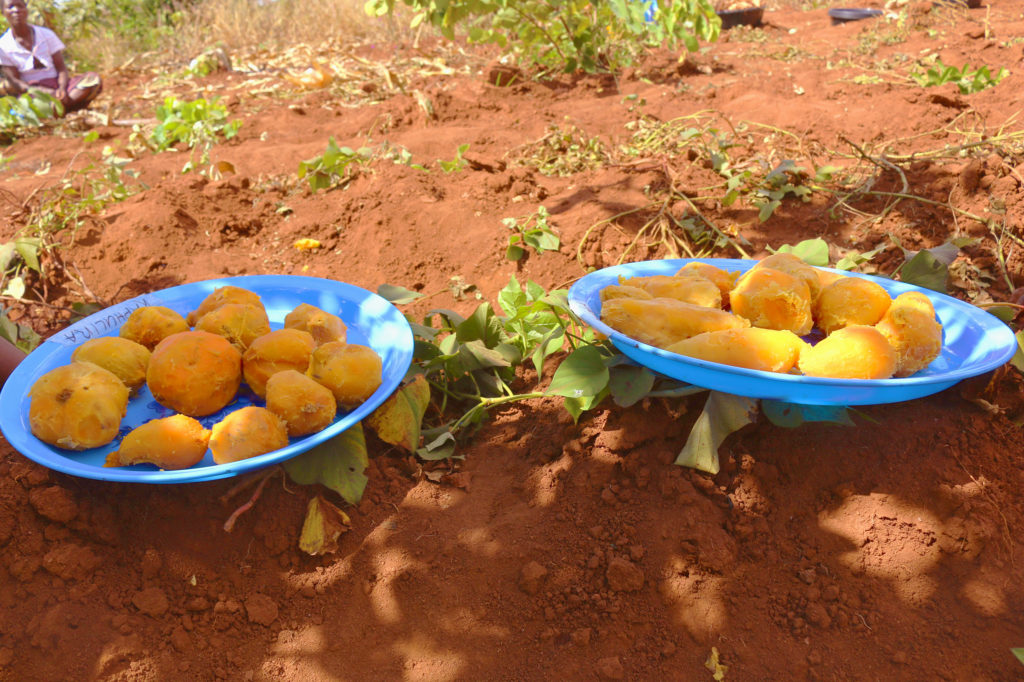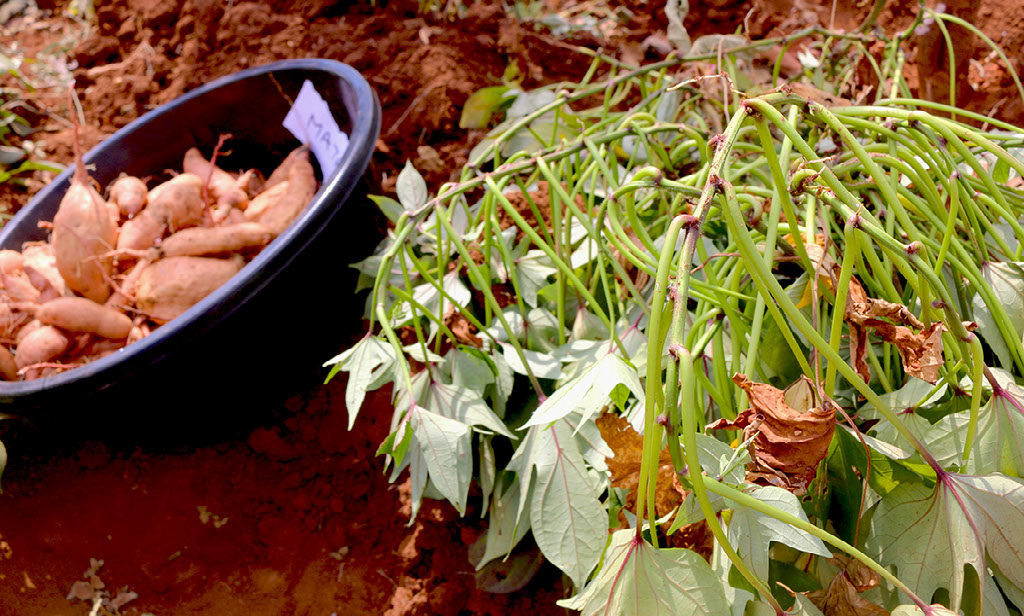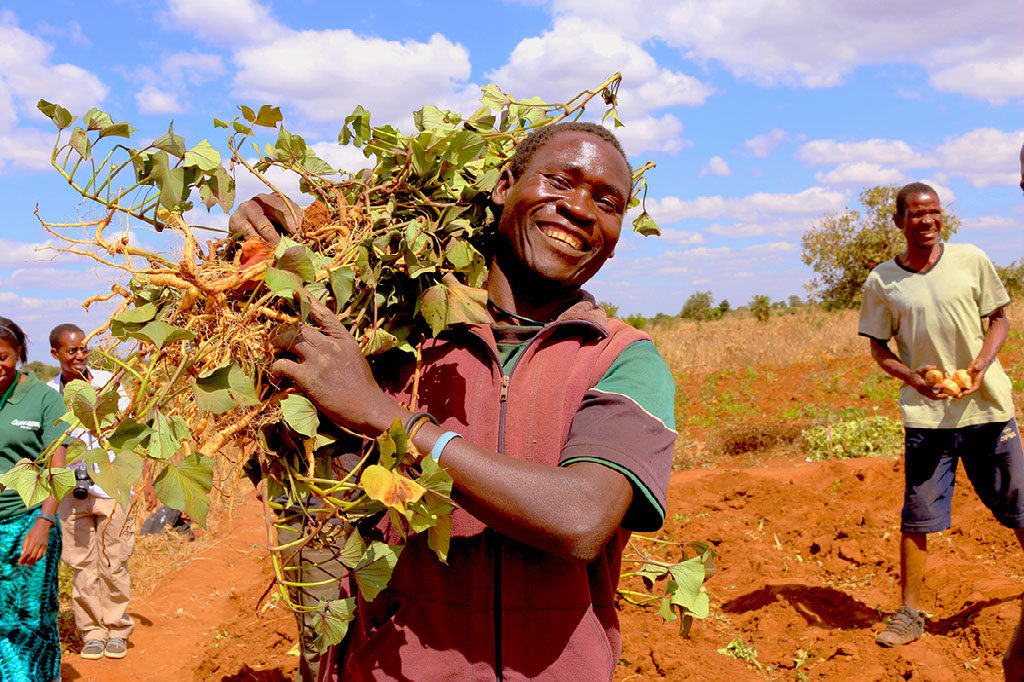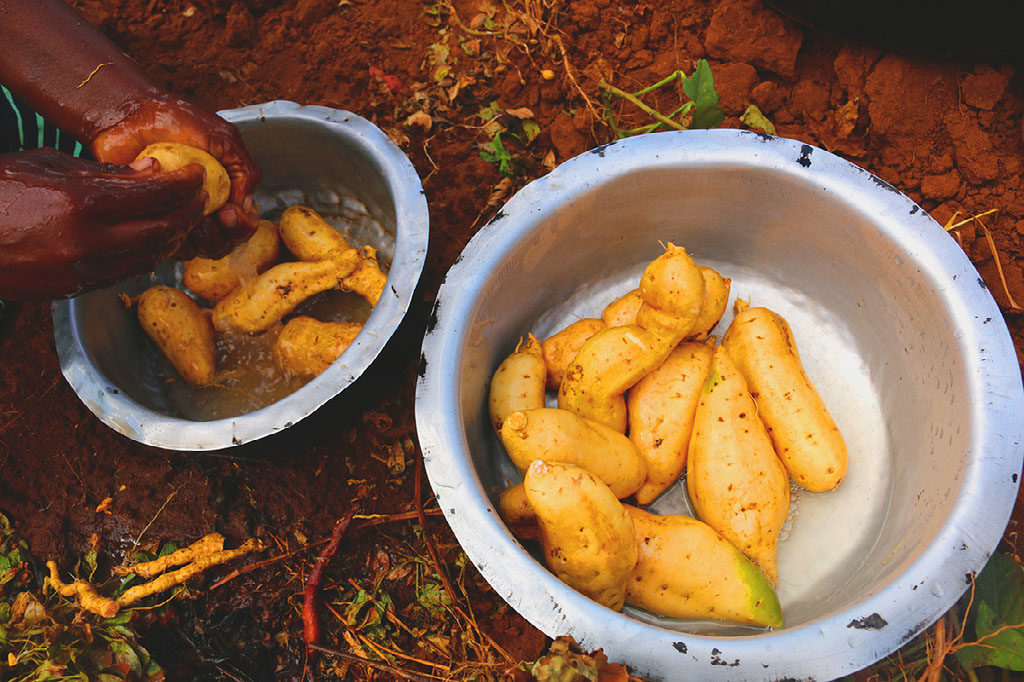Orange fleshed sweetpotato (OFSP) is making its way on to the farms and into the kitchens of smallholder farmers in Malawi. With support form the International Potato Center (CIP) farmer groups have been undertaking varietal evaluation to find out which types of sweetpotato grow best in different parts of the country and which varieties appeal most to the local consumers in rural and urban Malawi. These field tastings will help CIP and our partners to scale up the nutrition benefits of biofortified orange-fleshed sweetpotato in Malawi.
In Malawi, CIP is working to have a significant impact on agriculture, markets and nutrition by reaching 75,000 households with children under 5 years of age with planting material for nutritious orange-fleshed sweetpotato (OFSP) varieties, nutrition messages and counseling in order to contribute to increased food availability, increased dietary diversity and improved Vitamin A nutrition of women and children in Malawi.






